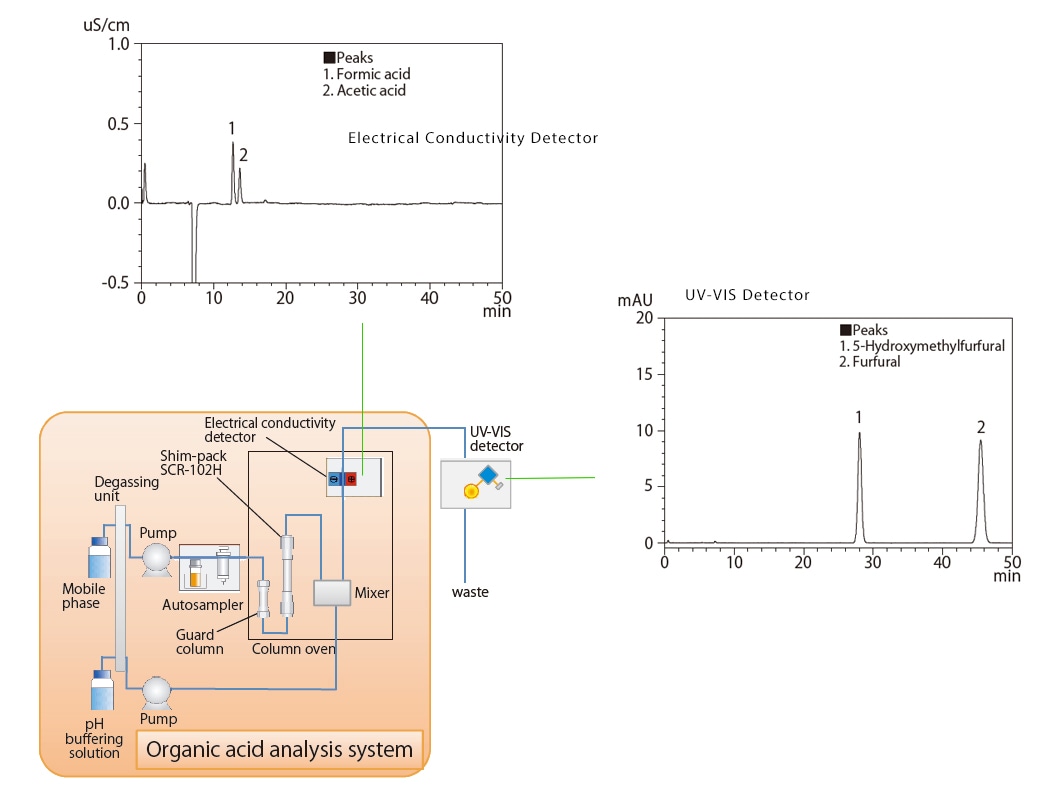HPLC-Analysis of Biomass Using Organic Acid Analysis System
There is increasing demand for fossil fuels, including oil and coal, natural gas, etc., while there is growing concern about the depletion of these energy sources. In addition, concern about the environmental impact of energy consumption is also intensifying, all of which are serving to focus attention on the development of alternative fuels. Biomass is a carbon neutral resource that is widely available on the earth, and is naturally regenerated. Effective use of timber from forest thinning and agricultural waste has advantages, both environmentally and economically. Industrial production of bioethanol from these unused biomass resources involves a process in which cellulose and hemicellulose in the biomass are decomposed using diastatic enzymes to be to converted to monosaccharides such as glucose or xylose, which are then converted to ethanol by the action of yeast. Efficient decomposition of the biomass using diastatic enzymes requires pretreatment with an acid or alkali. However, as a result of this pretreatment, organic acids such as formic acid and acetic acid, and furan compounds such as furfural and hydroxymethylfurfural are produced as byproducts, which adversely inhibit fermentation by the yeast.

We introduce an example of simultaneous analysis of acetic acid, formic acid, furfural, and 5-hydroxymethyl furfural, typically present in the biomass, using a combination of an organic acid analysis system together with an ultraviolet-visible spectrophotometric detector.
A simultaneous analysis of acetic acid, formic acid
We introduce an example of simultaneous analysis of acetic acid, formic acid, furfural, and 5-hydroxymethyl furfural, typically present in the biomass, using a combination of an organic acid analysis system together with an ultraviolet-visible spectrophotometric detector.
In an organic acid analysis system, pH buffer solution is mixed with the column eluate to bring its pH to near-neutral, thereby promoting dissociation of the organic acids and improving sensitivity for their detection in the electrical conductivity detector. However, as furfural and 5-hydroxymethylfurfural are difficult to detect using an electrical conductivity detector, they were detected by the UVVIS detector downstream of the electrical conductivity detector.



